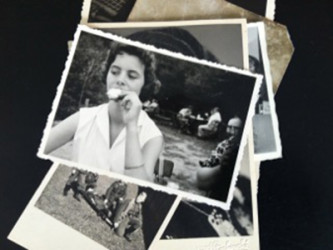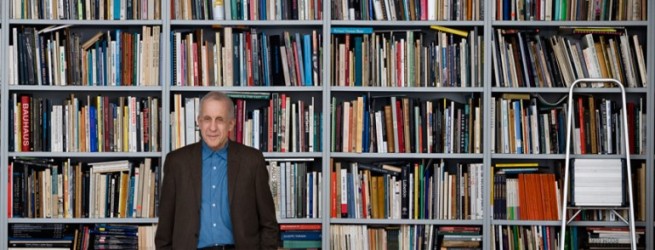Academic Affairs OfficeAccessory DesignAnimationArchitecture and Urban DesignArt EducationCenter for Flat TechnologiesCeramicsCultural Heritage and ConservationDepartmentsDesign and Technology FuturesDoctoral SchoolDrawingFacilities and WorkshopsFaculty of ArchitectureFaculty of Art and CultureFaculty of DesignFaculty of Fine ArtsFashion DesignFinancial DepartmentGalleryGlass ArtGraphic ArtGraphic DesignInstallation and SculptureInstitute of Art History and Visual CultureInternational OfficeIT OfficeJewellery and BlacksmithingLandscape ArchitectureLibraryLinnaehitus @enMaking SpaceNew MediaOffice of the RectorateOpen AcademyPaintingPerforming ArtsPhotographyProduct DesignRectorateResearch and Development OfficeScenographySupport UnitsTextile DesignUncategorizedUrban PlanningUrban Studies
Category: Institute of Art History and Visual Culture
12.11.2015
Jan Verwoert public lecture on November 12th
Institute of Art History and Visual Culture
On Thursday, November 12th at 6PM, internationally renowned art theorist and professor of Oslo Art Academy Jan Verwoert will hold a public lecture Whipped Cream for the Walking Dead at the hall of the Estonian Academy of Sciences, 6 Kohtu St.
The material world each day gives us more stuff to buy and fear, while at night our faces at night are bathed in the glow of LED-screens as we look for true life on the net. Did the war stop in the ’50s? Or did the pills just get better in taking the edge off? What to do when everywhere we go, online or IRL, we still can’t help but bring our body?
One way to deal with the situation, it would seem, is to turn life into a shimmer as sublimely dull as that on your screen. Call it the bliss of Zombies who no longer feel that they don’t feel, because they have lost their metabolism and can eat what they want and never put on a gram of weight. Who could fail to be convinced by the deep drowsiness in Lana del Rey’s voice when she sings that all she wanted to do was get high by the beach?
Yet what if the soul keeps kicking and yearning for some food and hurls us back in among a world of things, people, promises and online horoscopes? What if we confronted the question Bifo Berardi raised, asking: “Where shall we take our round bodies?”
Jan Verwoert is a writer, a contributing editor of frieze magazine, a professor for theory at the Oslo Academy of the Arts and teaches at the Piet Zwart Institute Rotterdam. He is the author of Bas Jan Ader: In Search of the Miraculous (MIT Press/Afterall Books 2006), Tell Me What You Want What You Really Really Want (Sternberg Press/Piet Zwart Institute 2010), and, with Michael Stevenson, Animal Spirits — Fables in the Parlance of Our Time (JRP, Zurich 2013) and Cookie! (Sternberg Press/Piet Zwart Inst. 2014).
Estonian Academy of Arts, Institute of Art History in co-operation with the Centre for Contemporary Art Estonia are organizing a public lecture series concentrated on the questions of contemporary curatorship, criticism and theory. All lectures will be preceded by reading groups analyzing the previuos texts of the visiting lecturer at the office of Centre for Contemporary Art Estonia, Vabaduse väljak 6. The reading groups are free and open for all. The writing of Jan Verwoert will be discussed this Friday, November 6th at 2PM, please e-mail rebeka@cca.ee for registration.
Posted by Ingrid Ruudi — Permalink
Jan Verwoert public lecture on November 12th
Thursday 12 November, 2015
Institute of Art History and Visual Culture
On Thursday, November 12th at 6PM, internationally renowned art theorist and professor of Oslo Art Academy Jan Verwoert will hold a public lecture Whipped Cream for the Walking Dead at the hall of the Estonian Academy of Sciences, 6 Kohtu St.
The material world each day gives us more stuff to buy and fear, while at night our faces at night are bathed in the glow of LED-screens as we look for true life on the net. Did the war stop in the ’50s? Or did the pills just get better in taking the edge off? What to do when everywhere we go, online or IRL, we still can’t help but bring our body?
One way to deal with the situation, it would seem, is to turn life into a shimmer as sublimely dull as that on your screen. Call it the bliss of Zombies who no longer feel that they don’t feel, because they have lost their metabolism and can eat what they want and never put on a gram of weight. Who could fail to be convinced by the deep drowsiness in Lana del Rey’s voice when she sings that all she wanted to do was get high by the beach?
Yet what if the soul keeps kicking and yearning for some food and hurls us back in among a world of things, people, promises and online horoscopes? What if we confronted the question Bifo Berardi raised, asking: “Where shall we take our round bodies?”
Jan Verwoert is a writer, a contributing editor of frieze magazine, a professor for theory at the Oslo Academy of the Arts and teaches at the Piet Zwart Institute Rotterdam. He is the author of Bas Jan Ader: In Search of the Miraculous (MIT Press/Afterall Books 2006), Tell Me What You Want What You Really Really Want (Sternberg Press/Piet Zwart Institute 2010), and, with Michael Stevenson, Animal Spirits — Fables in the Parlance of Our Time (JRP, Zurich 2013) and Cookie! (Sternberg Press/Piet Zwart Inst. 2014).
Estonian Academy of Arts, Institute of Art History in co-operation with the Centre for Contemporary Art Estonia are organizing a public lecture series concentrated on the questions of contemporary curatorship, criticism and theory. All lectures will be preceded by reading groups analyzing the previuos texts of the visiting lecturer at the office of Centre for Contemporary Art Estonia, Vabaduse väljak 6. The reading groups are free and open for all. The writing of Jan Verwoert will be discussed this Friday, November 6th at 2PM, please e-mail rebeka@cca.ee for registration.
Posted by Ingrid Ruudi — Permalink
14.10.2015
Prof Kenneth Frampton open lecture on October 14th
Institute of Art History and Visual Culture
Estonian Academy of Arts, Institute of Art History is delighted to present a public lecture of Prof Kenneth Frampton (Columbia University, New York) on Wednesday, October 14th 6PM at the Museum of Estonian Architecture.
Kenneth Frampton is an architect and architectural historian whose Modern Architecture. A Critical History from 1980, currently available in its fourth, significantly updated edition, has become one of the most canonical accounts of 20th century architecture. With remarkably broad scope, Kenneth Frampton introduced to the Western-centered discourse of modern architecture developments by the Russian avant-garde, Alvar Aalto and Scandinavian modernism, experimentations in colonial contexts as well as contemporary developments on the global scale. Besides architecture history, Prof Frampton has been a prolific commentator on architecture of our own age. Having moved from Great Britain to the United States in 1965, Kenneth Frampton started teaching firstly in Princeton University and from 1972 onwards in Columbia, forming the most innovative circle of architectural theorists of the time together with Peter Eisenman, Manfredo Tafuri, Rem Koolhaas, Diana Agrest ja Anthony Vidler. The magazine Oppositions, established at Columbia in 1973, became the leading platform for innovative architectural thought, aiming at introducing critical theory to the discussions on architectural practice and culture in the wider sense. Frampton’s own positions have been informed by Hannah Arendt’s social critique as well as Martin Heidegger’s conceptions of locality, thus he has always emphasized the social responsibility of architectural production as well as the specificities of context, aiming to resist the tendency to view buildings as representations or commodity. The 1983 essay Towards a Critical Regionalism: Six points for an architecture of resistance, pleading for a critical locality as a countermeasure against global homogenization and scenographic architecture, retains its relevance even today. These principles continue to inform Prof Frampton’s recent publications including monographic volumes on Alvaro Siza (2000), Le Corbusier (2001), Tadao Ando (2003), and five North American architects (2012).
The open lectures of the Institute of Art History are supported by the Estonian Cultural Endowment.
Professor Kenneth Frampton’s public lecture is organized in co-operation with Aalto University Helsinki.
Photo: Jeff Barnett-Winsby, 2007
Posted by Ingrid Ruudi — Permalink
Prof Kenneth Frampton open lecture on October 14th
Wednesday 14 October, 2015
Institute of Art History and Visual Culture
Estonian Academy of Arts, Institute of Art History is delighted to present a public lecture of Prof Kenneth Frampton (Columbia University, New York) on Wednesday, October 14th 6PM at the Museum of Estonian Architecture.
Kenneth Frampton is an architect and architectural historian whose Modern Architecture. A Critical History from 1980, currently available in its fourth, significantly updated edition, has become one of the most canonical accounts of 20th century architecture. With remarkably broad scope, Kenneth Frampton introduced to the Western-centered discourse of modern architecture developments by the Russian avant-garde, Alvar Aalto and Scandinavian modernism, experimentations in colonial contexts as well as contemporary developments on the global scale. Besides architecture history, Prof Frampton has been a prolific commentator on architecture of our own age. Having moved from Great Britain to the United States in 1965, Kenneth Frampton started teaching firstly in Princeton University and from 1972 onwards in Columbia, forming the most innovative circle of architectural theorists of the time together with Peter Eisenman, Manfredo Tafuri, Rem Koolhaas, Diana Agrest ja Anthony Vidler. The magazine Oppositions, established at Columbia in 1973, became the leading platform for innovative architectural thought, aiming at introducing critical theory to the discussions on architectural practice and culture in the wider sense. Frampton’s own positions have been informed by Hannah Arendt’s social critique as well as Martin Heidegger’s conceptions of locality, thus he has always emphasized the social responsibility of architectural production as well as the specificities of context, aiming to resist the tendency to view buildings as representations or commodity. The 1983 essay Towards a Critical Regionalism: Six points for an architecture of resistance, pleading for a critical locality as a countermeasure against global homogenization and scenographic architecture, retains its relevance even today. These principles continue to inform Prof Frampton’s recent publications including monographic volumes on Alvaro Siza (2000), Le Corbusier (2001), Tadao Ando (2003), and five North American architects (2012).
The open lectures of the Institute of Art History are supported by the Estonian Cultural Endowment.
Professor Kenneth Frampton’s public lecture is organized in co-operation with Aalto University Helsinki.
Photo: Jeff Barnett-Winsby, 2007
Posted by Ingrid Ruudi — Permalink


